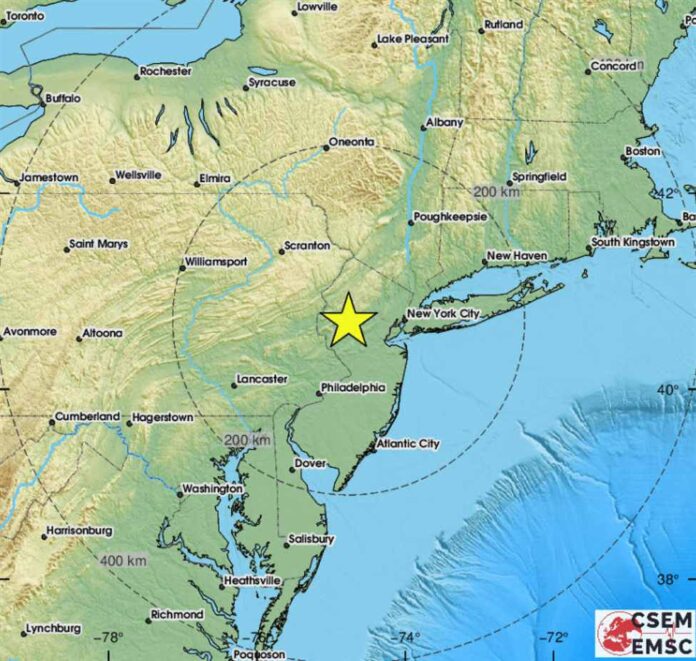Today, New York City experienced an earthquake that caught many residents off-guard. As a bustling metropolis, NYC is not typically known for seismic activity, making today’s event particularly noteworthy. In this article, we will delve into the details of the earthquake, its impact, and what residents should be aware of moving forward.
Understanding the dynamics of earthquakes is crucial, especially in an urban setting like New York City. While earthquakes are more common in areas near tectonic plate boundaries, they can occur anywhere. This article aims to provide a comprehensive overview of the recent seismic event, including its magnitude, potential causes, and safety tips for residents.
Join us as we explore the significance of today’s earthquake, the science behind it, and how New Yorkers can prepare for any future seismic activities.
Earthquake Details
On [insert date], an earthquake measuring [insert magnitude] struck New York City. The epicenter was located [insert location details], and the tremors were felt across various boroughs. Here are some key details about the earthquake:
- Magnitude: [insert magnitude]
- Depth: [insert depth]
- Time: [insert time]
- Duration: [insert duration]
Impact on NYC
The impact of today’s earthquake was felt across the city, with residents reporting varying experiences. Some noted minor shaking, while others experienced more intense tremors. Fortunately, there were no immediate reports of significant damage or injuries. However, the event serves as a reminder of the importance of preparedness in the face of natural disasters.
Understanding Earthquakes
Earthquakes are caused by the sudden release of energy in the Earth’s crust, resulting in seismic waves. This release can occur due to various factors, including tectonic plate movements, volcanic activity, or human activities. Understanding these mechanisms can help residents better prepare for potential future earthquakes.
Types of Earthquakes
- Tectonic Earthquakes: Caused by the movement of tectonic plates.
- Volcanic Earthquakes: Associated with volcanic activity.
- Induced Seismicity: Resulting from human activities, such as mining or fracking.
Safety Tips for Residents
In the event of an earthquake, it is essential for residents to know how to protect themselves. Here are some key safety tips to keep in mind:
- Drop, Cover, and Hold On: Get down on your hands and knees, cover your head and neck, and hold on until the shaking stops.
- Stay Indoors: If you are inside, stay there and move away from windows, glass, and heavy furniture.
- If Outside: Move to an open area away from buildings, trees, and utility wires.
- Aftershocks: Be prepared for aftershocks, which can occur after the initial earthquake.
Historical Context of Earthquakes in NYC
While New York City is not known for frequent earthquakes, it has experienced several notable seismic events in the past. Understanding the historical context can provide insight into the city’s geological stability.
- 1783 New York Earthquake: A significant earthquake that shook the area, causing minor damage.
- 1884 Earthquake: A small quake centered in New Jersey that was felt in NYC.
- 2011 Virginia Earthquake: Although centered in Virginia, this earthquake was felt as far north as New York City.
Expert Opinions on Seismic Activity
Experts have weighed in on today’s earthquake and its implications for New York City. According to [insert expert name], a [insert expert title], “While today’s earthquake was relatively mild, it serves as a reminder that New York City is not immune to seismic activity.”
Experts recommend that residents stay informed about earthquake preparedness and remain vigilant, especially in the wake of today’s event.
What to Do After an Earthquake
After the shaking stops, it is crucial to assess your surroundings and take appropriate action. Here are some steps to follow:
- Check for injuries: Attend to anyone who may be hurt.
- Inspect your home: Look for gas leaks, water damage, and structural issues.
- Stay informed: Listen to news updates for information on aftershocks and emergency services.
Conclusion
Today’s earthquake in New York City serves as a stark reminder of the unpredictable nature of seismic activity. While the event was minor, it highlights the importance of being prepared and informed. We encourage all residents to familiarize themselves with earthquake safety tips and stay updated on emergency procedures.
If you found this article useful, please leave a comment below, share it with others, and check out our related articles for more information on emergency preparedness and safety.

